How to Lay Garden Turf
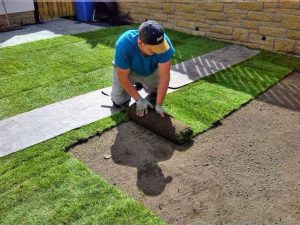

How to lay turf in your garden. Laying purpose-grown turf will enable you to enjoy a fine lawn of instant beauty and maturity without the inconvenience or delays associated with seeding. When you purchase turf from TURFFIT you can rest assured that our products are grown under the Turfgrass Growers Association (TGA) quality assurance policy.
Step by Step Guide on how to lay Garden Turf.
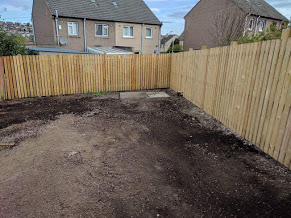
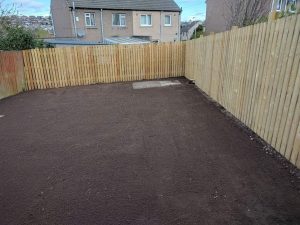
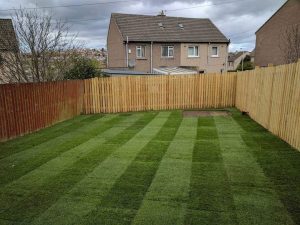
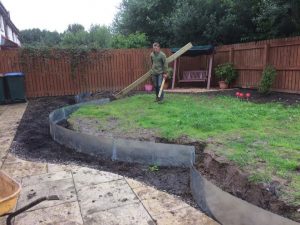
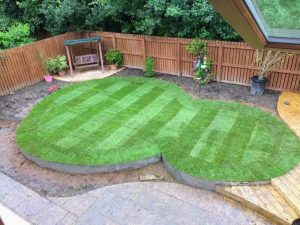
Please remember that turf consists of a mass of living, breathing plants. Applying appropriate care and attention to your new lawn will enable it to grow to its full potential and provide you with many years of enjoyment. Our guide on how to lay garden turf is tried and trusted and is how we lay turf for all our delighted customers
Ground Preparation
Proper ground preparation is essential for the establishment and future well-being of your new lawn: inadequately prepared ground will never produce the best results.
You should remove the existing turf by slicing beneath the grass with a spade. For larger areas, consider hiring a purpose-designed turf cutter.
Turn the soil over thoroughly to a depth of 15cm using a spade or a powered cultivator. Clear the area of stones, weeds, old turf and other debris.
Raking
Rake the ground to ensure that you achieve a level surface. Lightly roll or tread the surface by foot to reveal any soft patches which can then be raked level. This process should be continued until the whole area is evenly firm and level. The surface should be firm but not compacted. You are now ready to lay the turf.
Ordering
Measure the proposed lawn area accurately in square meters, You can use our ordering calculator to help work out the total area,
Turf is supplied in compact 1 m2 rolls of 50 to 70 (depending on moisture content) per pallet for easy handling and laying turf. As turf is generally harvested to order, it is recommended that you give us as much notice as possible of the required delivery date.
Turf must be laid as soon as possible, ideally within 24 hours of delivery. In hot weather, keep delivered turf in the shade. It is advisable to prepare the ground in advance of the turf arriving to avoid delays in installing.
Laying Turf
Never walk directly on the prepared soil or newly laid turf. Use boards or planks to work from and walk on.
Start by unrolling one roll of turf around the perimeter of the lawn. Avoid using small pieces at the edges as these can dry out and perish. Ensure that the underside of the new turf has full contact with the soil below,
Lay the next strip across the longest straight run and continue to work across the lawn, strip by strip, producing a pattern similar to brickwork.
Place adjoining edges and ends against each other, but avoid stretching the turf. Any overlapping pieces and ends of rows should be cut off neatly with a sharp knife or half-moon lawn edger.
Watering
Between March and October, newly-laid turf should be watered thoroughly within half an hour of installation.
You’ll need to keep repeating the watering daily until the roots are established. As a guide, at least two hours per day of constant watering is essential across the complete lawn area. The hotter, drier and windier the weather, the more water will be needed. Water immediately on any sign of the turf drying out e.g. gaps, lifting, browning or curling.
Feeding
The most suitable fertiliser should contain similar levels of Nitrogen, Phosphate and Potassium. This should be applied every four to six weeks during the growing season. Always follow the manufacturer’s recommendations with regard to the quantity, timing and method of applications. A policy of ‘little but often’ will help maintain your lawn in peak condition.
Mowing
While the new turf may grow tall, resist the temptation to make the initial cut until your new lawn has rooted. This can be checked easily by lifting a corner to see if the roots are attached to the soil below.
For the first few mowings, set the lawnmower to its highest setting to avoid stressing the grass. Mow regularly, each time removing no more than one-third of the grass height. When you’ve fully established your new lawn, the height of cut can be reduced gradually to a height of between 15mm and 35mm. Take care to avoid scalping.
Lawn care sheet
Please download a copy of our Lawn Care instructions which should be strictly followed to ensure that freshly laid turf receives the best care when it is first installed.


